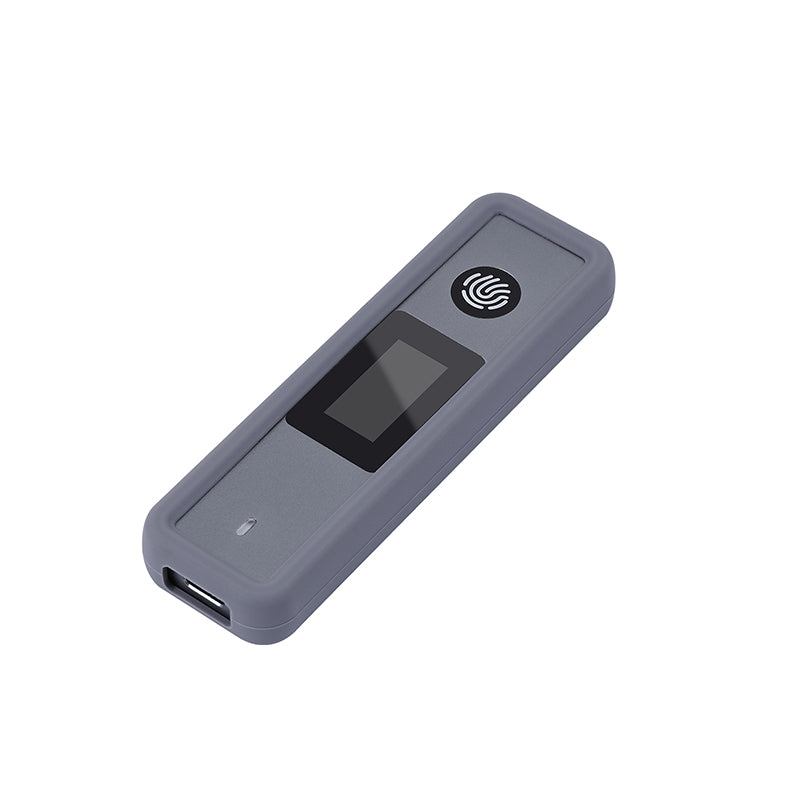
Share
NVMe Enclosure Not Working? Here Are 5 Common Issues and How to Fix Them
Meta description:
Having trouble with your NVMe SSD enclosure not showing up, overheating, or disconnecting? Here's a complete guide to the 5 most common problems—and how to fix them fast.
If you're using an NVMe enclosure to connect an SSD as an external drive, you're probably expecting blazing speeds and plug-and-play convenience. And most of the time, that's exactly what you get—until, suddenly, it doesn't work.
Whether your drive isn't recognized, transfer speeds are crawling, or your setup randomly disconnects, you're not alone. NVMe enclosures are great, but they can be finicky. Here's a practical guide to help you troubleshoot the five most common issues and get your SSD back in action.
1. Your NVMe Enclosure Isn't Recognized by Your Computer
You plug it in, but… nothing happens. No drive shows up. This is one of the most common frustrations for users working with external NVMe enclosures.
Why it happens:
You might be using an M.2 SATA SSD in an NVMe-only enclosure (yes, they're different).
The SSD may not be seated properly inside the enclosure.
Your USB port or cable may not support high-speed data transfer or may be underpowered.
Your system may see the drive but not assign it a letter.
How to fix it:
First, confirm your SSD is NVMe and not SATA. SATA drives won’t work in most NVMe enclosures.
Open the enclosure and reseat the SSD, making sure it clicks into the M.2 slot securely.
Try a different USB-C or USB-A port, and make sure you're not using a cheap hub.
On Windows, open Disk Management. If the drive shows as unallocated, you'll need to initialize and format it before use.
2. The SSD Gets Really Hot—and Then Disconnects
If your drive gets warm to the touch, that's normal. But if it's burning hot and frequently disappears from your system, you might have a thermal problem.
Why it happens:
NVMe SSDs can heat up quickly, especially during large file transfers.
Many budget enclosures have poor thermal design and no heat dissipation.
When SSDs reach 70–80°C (158–176°F), they often throttle performance—or shut down entirely to protect themselves.
How to fix it:
Choose an enclosure with an aluminum body, heatsink, or even a small fan. Some premium models offer active cooling.
Avoid using the drive in direct sunlight or on soft surfaces that trap heat.
Monitor temperatures using tools like CrystalDiskInfo (Windows) or Smartmontools (Linux/macOS).
Let the drive cool off between heavy tasks like 4K video editing or backups.
3. Transfer Speeds Are Slower Than Expected
You’re expecting 900+ MB/s, but you're getting 40 MB/s or less. What gives?
Why it happens:
You're connected through a USB 2.0 port (which maxes out at ~60 MB/s).
The USB cable doesn’t support USB 3.2 Gen 2 or Thunderbolt speeds.
The enclosure's chipset doesn't support UASP (USB Attached SCSI Protocol).
The SSD is throttling due to heat or cache exhaustion.
How to fix it:
Use a USB-C port that supports USB 3.1 Gen 2 or above—check your laptop or motherboard specs.
Swap the cable for one rated for 10 Gbps or higher.
Choose an enclosure with a modern controller like JMS583 or RTL9210, which supports UASP.
If you're transferring large amounts of data, break it into smaller chunks or give your drive time to cool down.
4. The Drive Is Recognized but Can’t Be Formatted or Read
Sometimes the drive shows up but won’t mount or format, or shows 0 bytes available. You may also see strange file system errors.
Why it happens:
The drive has leftover partitions or a corrupted file system.
The file system format is not supported by your OS (e.g., APFS on Windows).
The drive was previously part of a RAID array or used for system boot.
How to fix it:
On Windows, open Disk Management → right-click the drive → “Delete Volume” → “New Simple Volume” to reformat (preferably as exFAT for compatibility).
On macOS, use Disk Utility → Erase → format as APFS, exFAT, or HFS+ depending on your needs.
If the partition table is corrupt, use diskpart (Windows) or diskutil (macOS Terminal) to wipe and reinitialize the disk.
Pro tip: Always back up the drive first if it contains valuable data before attempting reformatting.
5. Intermittent Disconnects or Random Errors
This is arguably the most annoying issue. You’re transferring files, and suddenly—the drive vanishes. No warning. No errors. Just gone.
Why it happens:
The SSD may be loose inside the enclosure.
USB selective suspend or power-saving features may be turning off the port.
The enclosure's firmware or chipset is buggy.
How to fix it:
Open the case and check if the SSD is properly locked in place with a screw or rubber peg.
In Windows, go to Control Panel → Power Options → USB Settings → disable "USB selective suspend".
Try a different USB port or system. If it works fine elsewhere, the issue might be OS-related.
Consider replacing the enclosure if all else fails. Not all models handle power and heat equally.
Bonus: Choose a Good Enclosure from the Start
Not all NVMe enclosures are built the same. If you're shopping for one, look for these features:
✅ Aluminum body for passive heat dissipation
✅ Support for USB 3.2 Gen 2 (10Gbps) or higher
✅ UASP and TRIM support
✅ Compatible with 2280-size M.2 NVMe SSDs
✅ Reliable chipsets like JMS583, RTL9210B, or ASM2362
Trusted brands include Sabrent, Orico, UGREEN, Plugable, and ICY BOX.
Final Thoughts
NVMe enclosures are incredibly useful, but when they fail, it can be frustrating—especially when you're not sure where the problem lies. The good news is most issues are fixable with a bit of troubleshooting and the right tools.
Whether you're setting up your first portable NVMe SSD or trying to recover from a no-show drive, understanding these common issues will help you avoid data loss, wasted time, and unnecessary returns.
Still having trouble? Drop your specific issue in the comments—we’ll help you sort it out.

